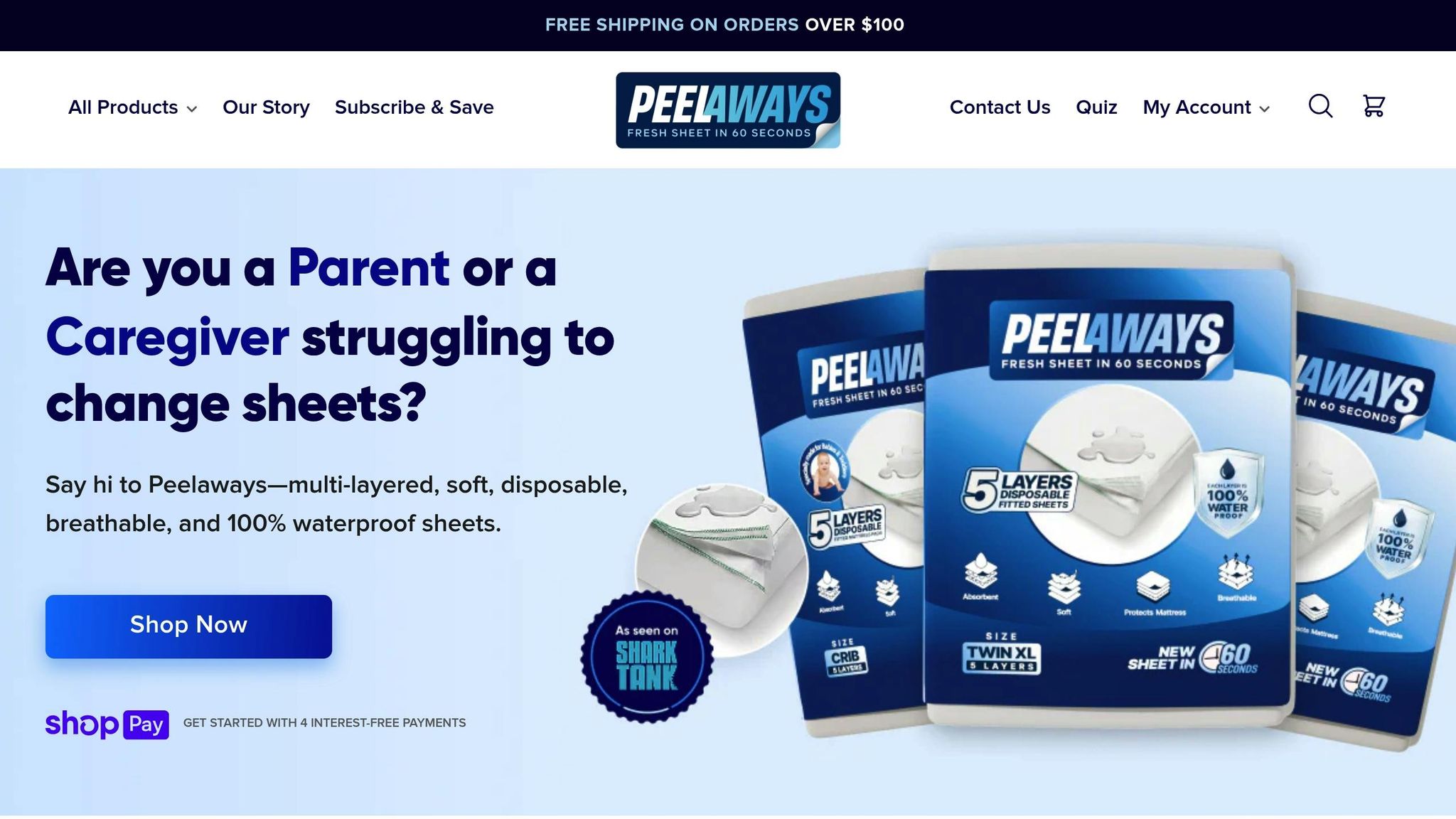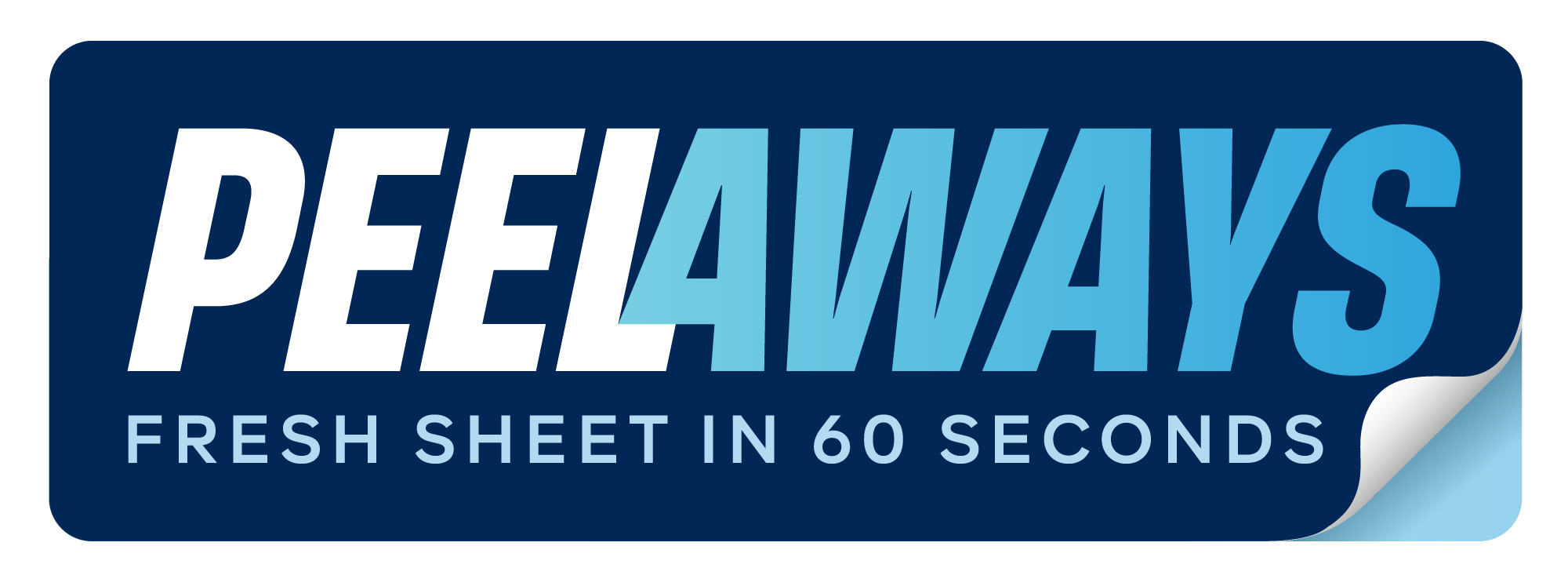How Leg Elevation Cushions Help Circulation

Leg elevation cushions are a simple way to improve circulation in your legs and reduce common issues like swelling, discomfort, and heaviness. By lifting your legs above heart level, these cushions use gravity to help blood flow more easily back to your heart, easing strain on your veins and reducing fluid buildup. They’re especially helpful for managing conditions like venous insufficiency, edema, or diabetes, and can also support recovery after surgery.
Key Benefits:
- Better Blood Flow: Helps veins return blood to the heart more efficiently.
- Swelling Relief: Reduces fluid buildup in legs and feet.
- Comfort: Eases heaviness and promotes relaxation during rest or recovery.
How to Use:
- Elevate legs 6–12 inches above heart level.
- Maintain position for 15–20 minutes, several times a day.
- Use firm foam cushions or adjustable options for proper support.
If you’re experiencing persistent pain, numbness, or worsening symptoms, consult a doctor to ensure leg elevation is suitable for you.
3 Fastest Ways To Improve Leg Circulation Lying Down
How Leg Elevation Cushions Support Circulation
Leg elevation cushions use the natural force of gravity to help improve blood flow and ease discomfort. By working with your body’s natural processes, these cushions provide a simple yet effective way to support circulation.
How Gravity Affects Circulation
Gravity has a big impact on how blood circulates in your body. While it helps blood flow down from your heart to your legs, it makes the return trip to your heart more difficult. When you spend long periods standing or sitting, gravity can slow this return flow, causing blood to pool in your veins and increasing venous pressure [1][2][3].
"Gravity can impede blood return from your legs to your heart. When standing or sitting for long periods, blood may pool in the veins. Elevating your legs utilizes gravity favorably, assisting venous return. This simple act can significantly enhance circulation." - United Vein & Vascular Centers® [1]
Elevating your legs above your heart helps counteract this issue. In this position, gravity works in your favor, making it easier for blood to flow back to your heart [2]. The reduced venous pressure means your blood vessels don’t have to work as hard, and blood pooling is minimized. Experts recommend raising your legs 6 to 12 inches above heart level for the best results [1][2]. This also encourages excess fluid to move away from the lower legs, improving overall comfort.
Reducing Swelling and Edema
Leg elevation cushions are particularly helpful in managing swelling caused by fluid buildup in the lower extremities. This fluid accumulation, often seen in conditions like edema, can lead to discomfort and heaviness in the legs and feet.
By keeping your legs elevated, these cushions help direct excess fluid away from the lower body and back toward the heart, where it can be recirculated effectively. As Dr. Gary Jacobson from Vascular Surgical Associates explains:
"Keep your legs above your heart. Consider the route blood has to travel from your legs to reach your heart. Elevating them at a higher level will allow gravity to move any built-up fluid away from your legs and to the heart more quickly, where it can be recirculated and dispersed evenly to eliminate pain and swelling." - Dr. Gary Jacobson, Vascular Surgical Associates [2]
For the best results, use the cushion to elevate your legs 6 to 12 inches above your heart. This positioning not only reduces swelling but also promotes better circulation and relieves discomfort caused by fluid retention.
Benefits of Using Leg Elevation Cushions
Adding leg elevation cushions to your routine can do more than just enhance comfort - they offer a range of benefits that support your overall health and recovery. From improving circulation to reducing swelling, these cushions play a key role in helping your body heal and function better.
Improved Blood Flow and Circulation
Leg elevation cushions can make a noticeable difference in how well your blood circulates. By lifting your legs, they take advantage of gravity to help blood flow more efficiently, delivering oxygen and nutrients to your muscles and tissues while easing the strain on your heart.
This improved circulation is particularly helpful if you deal with conditions like diabetes or peripheral artery disease, where blood flow to the lower extremities may be compromised. It can also benefit anyone who spends long hours standing or sitting, as it reduces fatigue and boosts energy levels by allowing your cardiovascular system to work more efficiently.
Reduced Swelling and Fluid Retention
Swelling, whether from standing too long, an injury, or a medical condition, can be uncomfortable and even painful. Leg elevation cushions help redistribute fluid, reducing swelling and easing the discomfort associated with fluid retention.
For those with chronic conditions like venous insufficiency or heart failure, regularly elevating the legs can help manage symptoms and prevent complications like skin issues caused by prolonged fluid buildup. The cushions provide a simple yet effective way to keep swelling under control.
Enhanced Comfort and Recovery
Whether you're recovering from surgery or just looking to relax, leg elevation cushions can improve your comfort significantly. They reduce pressure on your lower back and make it easier to find a restful position for sleeping or relaxing.
During recovery from procedures involving the legs, feet, or lower abdomen, these cushions can be particularly helpful. They minimize swelling around surgical sites, reduce pain, and promote proper blood flow, which can aid the healing process. Many healthcare providers include leg elevation as part of post-surgical care recommendations.
Better positioning also leads to improved sleep quality. When your legs are elevated, you're less likely to experience cramping, restless legs, or discomfort that can disrupt your rest. For those with chronic pain conditions like arthritis or fibromyalgia, the gentle elevation and improved circulation can offer natural relief, making daily life a bit easier without relying on medications.
sbb-itb-45288fe
Choosing and Using Leg Elevation Cushions Safely
To get the most out of leg elevation cushions, selecting the right type and using it correctly is key. The wrong cushion or improper positioning can not only reduce its benefits but might even lead to discomfort.
Types of Leg Elevation Cushions
Here are the most common types of leg elevation cushions:
-
Foam wedge cushions
These triangular cushions, often made from memory foam or high-density foam, are known for maintaining their shape and providing stable support. They come in various heights - typically between 6 and 12 inches - offering consistent elevation for extended periods. -
Adjustable pillows
Designed with removable inserts or adjustable chambers, these allow you to customize the height and firmness. This makes them a versatile choice, especially if multiple people in your household plan to use the same cushion or if your elevation needs change during recovery. -
Inflatable options
Portable and easy to store, inflatable cushions are great for travel or temporary use. However, they may not provide the same level of consistent support as foam options and can be prone to leaks over time.
Choosing the right cushion depends on your specific needs, whether you’re recovering from surgery, managing a health condition, or simply aiming to boost circulation. Once you’ve selected a cushion, proper positioning is just as important to maximize its benefits.
Proper Positioning for Best Results
Positioning your legs correctly ensures you gain the most from elevation. For optimal circulation, elevate your legs above heart level with a slight bend at the knees. Aim for the following angles: thighs at less than 45 degrees, knees at 20–30 degrees, and calves at 15–20 degrees [4][5][6].
Keep your spine straight and avoid twisting to prevent neck or back pain. Use a surface that allows you to fully extend your body without feeling cramped [4].
To see results, try to maintain this position for at least 15 to 20 minutes at a time [4][5]. If you have ongoing circulation issues, making leg elevation a daily habit could be beneficial. Wear loose, breathable clothing - like pajamas or stretchy workout gear - to avoid restricting blood flow, as tight clothing can counteract the benefits [4].
Safety Tips and When to See a Doctor
Leg elevation is generally safe, but certain health conditions require extra caution. If you have an underlying condition, consult your doctor before starting leg elevation to make sure it’s suitable for you [5].
For example, individuals with severe Congestive Heart Failure (CHF) might experience shortness of breath when their legs are elevated, making the practice unsafe [4]. Similarly, those with Peripheral Arterial Disease (PAD) may feel pain in their feet during elevation because arterial blood flow struggles against gravity [4].
"Patients who suffer from either of these conditions should thoroughly discuss leg elevation with their doctor before attempting it." – Lounge Doctor [4]
If you're recovering from surgery or an injury, follow your doctor’s instructions on how often and how long to elevate your legs [5]. While leg elevation promotes healthy blood flow, it’s not a cure-all. It won’t undo the effects of smoking, prolonged sitting or standing, lack of exercise, or poor diet choices [4].
Be mindful of warning signs. Stop elevating your legs and contact a healthcare provider if you notice increased pain, persistent numbness, tingling that doesn’t improve, changes in skin color, or worsening of your original symptoms. These could indicate a more serious issue requiring medical attention.
Maintaining Hygiene and Comfort During Recovery
Recovering while keeping your legs elevated for extended periods requires more than just rest - it demands careful attention to hygiene. A clean and comfortable environment is essential not only for your comfort but also to prevent infections and skin issues that could hinder your healing.
Managing Incontinence and Skin Health
Prolonged bed rest and limited mobility can lead to challenges like incontinence, making hygiene a critical focus. Keeping your skin clean and dry is key to avoiding pressure sores and irritation [9]. This is particularly important when your legs are elevated for long stretches.
Daily care routines are vital. Use mild cleansers and moisturizers to maintain skin hydration and strength, especially in areas prone to pressure, like where your body contacts cushions or the bed surface [7]. These pressure points are most at risk for skin breakdown.
When full baths aren’t feasible, daily sponge baths can help maintain cleanliness and prevent infections, focusing on high-risk areas such as underarms and the groin [7][8]. This approach ensures hygiene without disrupting your therapy.
For those dealing with incontinence, specialized products can make life much easier. Absorbent items like bedpan liners and male urinal bags with super-absorbent pads offer a practical way to manage accidents while keeping your environment clean [7]. These products are designed to contain waste effectively, minimizing leaks, odors, and mess.
Dispose of waste immediately using drawstring liners to prevent spills, odors, and bacterial buildup [7]. Quick cleanup is essential to maintaining a safe and sanitary recovery space.
Oral hygiene is another often-overlooked aspect of recovery. Brushing your teeth or using oral swabs and mild rinses daily can prevent discomfort and complications [7][8]. Even when mobility is limited, consistent oral care supports overall health and well-being.
To complement these hygiene practices, having a smart bedding solution can make recovery even smoother.
Simplifying Bedding Changes With PeelAways

Changing sheets can be a daunting task when mobility is limited, especially during leg elevation. Clean bedding is crucial for preventing irritation, reducing bacteria, and ensuring a fresh, comfortable surface [7]. However, traditional sheet changes - lifting mattresses and struggling with fitted corners - become nearly impossible in this scenario.
That’s where PeelAways disposable bed sheets come in. These sheets feature a patented 5–7 layer peel-away design, allowing you to quickly remove the top soiled layer to reveal a clean, waterproof sheet underneath. No heavy lifting, no laundry - just peel and you’re done. This is a game-changer when maintaining leg elevation makes traditional changes impractical.
PeelAways are 100% waterproof and breathable, offering protection against incontinence while ensuring comfort during extended bed rest. They come in standard sizes, from Twin ($34.99) to King ($53.99), making them suitable for any bed setup you’re using for therapy.
For caregivers, these sheets reduce physical strain. The multi-layer design keeps bedding smooth and wrinkle-free, minimizing pressure points that could lead to sores [7]. Plus, there’s no need to handle soiled linens - just peel, dispose, and move on.
Hand hygiene remains critical. Caregivers should wash their hands before and after interactions to prevent cross-contamination [7]. With PeelAways, this process becomes simpler, as there’s no handling of traditional linens - just a quick, hygienic peel-away.
This convenience is especially valuable during late-night incidents. Instead of disrupting your rest or therapy routine with a full sheet change, you can refresh your bedding in seconds, keeping your recovery on track without unnecessary interruptions.
Conclusion
Leg elevation cushions offer a simple and effective way to improve circulation, reduce swelling, and aid recovery from various conditions. They can be particularly helpful for managing issues like varicose veins, lymphedema, and post-surgical healing, providing much-needed relief and support during recovery.
To get the most out of leg elevation, aim to raise your legs 6–12 inches above heart level for 15–20 minutes several times a day. Building a consistent routine can help you see lasting benefits over time.
For those dealing with extended bed rest or mobility challenges, maintaining hygiene during elevation therapy is equally important. Clean bedding plays a significant role in recovery, but frequent changes can disrupt the positioning required for proper leg elevation.
This is where practical solutions like PeelAways disposable bed sheets make a difference. Their patented multi-layer peel-away design allows you to maintain hygiene without lifting heavy mattresses or disturbing your elevation setup. By simplifying bedding changes, these sheets ensure you can focus on recovery without compromising cleanliness or comfort.
Combining effective leg elevation with smart hygiene practices creates a recovery routine that supports better circulation and promotes healing.
FAQs
How often should I use a leg elevation cushion to improve circulation and reduce swelling?
To get the most out of this practice, try elevating your legs for about 15 minutes, three to four times a day. Doing this regularly can help boost blood flow, ease swelling, and aid in recovery.
For the best results, make sure your legs are positioned above heart level during each session. Over time, this simple routine can noticeably improve circulation and enhance your overall comfort.
Are there any health conditions where using a leg elevation cushion might not be safe?
In certain situations, a leg elevation cushion might not be the best choice. For instance, people dealing with severe heart failure, advanced circulation problems, or specific spinal injuries should avoid elevating their legs without consulting a doctor. Elevating the legs improperly or for extended periods can sometimes lead to issues like blood pooling or nerve strain, especially if the angle isn’t right.
If you’re managing any of these conditions or have concerns, it’s important to talk to your healthcare provider first. They can help determine whether using a leg elevation cushion is safe and suitable for your individual needs.
What are the differences between foam wedges, adjustable pillows, and inflatable cushions for elevating your legs?
Foam wedge cushions are crafted from dense foam, providing firm and stable support with a gentle incline. They’re ideal for maintaining a consistent position and are well-suited for extended use.
Adjustable pillows, on the other hand, let you tweak the height or angle, giving you more options for personalized comfort. That said, they often don’t match the firmness level of foam wedges.
Inflatable cushions stand out for being lightweight and easy to carry. You can adjust their firmness and height by inflating them to your preference. While perfect for travel, they might not be as durable or stable as foam-based alternatives.
Each option caters to specific needs: foam wedges focus on stability, adjustable pillows provide versatility, and inflatable cushions shine in portability.
Related Blog Posts
Comments
0

SAVE MONEY & WATER
Professionals & Institutions save a fortune on labor/laundry.

SUPERIOR COMFORT
The first thing our customers notice is how soft our sheets are.

100% WATERPROOF
Each layer is 100% Waterproof, perfect for spills and accidents

SAVE TIME
Change the sheet in under 1 minute without stripping the bed.




Leave a comment